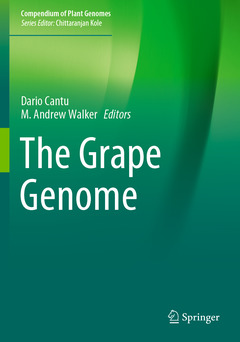The Grape Genome, 1st ed. 2019 Compendium of Plant Genomes Series
Coordonnateurs : Cantu Dario, Walker M. Andrew

Describes the best practices to resolve and annotate grape genomes and transcriptomes
Provides a uniquely comprehensive description of grapevine genetic diversity and its application in modern breeding programs
Explains how domestication shaped the grape genome
Links the grape genome composition and expression to viticulture traits and grape berry quality
Date de parution : 01-2021
Ouvrage de 367 p.
17.8x25.4 cm
Date de parution : 12-2019
Ouvrage de 367 p.
17.8x25.4 cm
